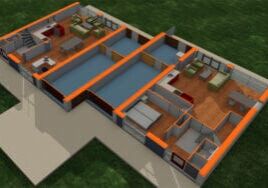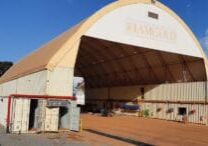The Cost of a Dated Education System to Our Workforce

Heather Wallace is Director of Communications / Project Manager at Momentum Innovations Group
It’s 5:30 in the morning at Mayfair School and Evin Jarrett is in his classroom preparing for the students who will begin trickling into his room around 6 am. This marks the beginning of his normal 12-hour day as he provides a place of refuge for students who are home alone early in the morning or after school.
Throughout the day there is constant knocking on his door - kids just dropping by to say “Hi”, to give him a hug, or begging him to let them hang out in his classroom. Some of them are skipping lunch and some are trying to skip other classes to be there, but one thing is very clear…kids desperately want to be in Mr. Jarrett’s middle school construction trades class.
His phenomenal hands-on learning experience serves 4th through 8th graders in a Title 1 school in Philadelphia. Once Evin feels a class has a solid understanding of safety, they are able to move on to learning to use power tools, basic plumbing (including sweating pipes) and electrical, masonry, framing, as well as introductions to technology and offsite construction.
One of the ways Evin is able to do so much hands-on learning in his classroom is by making theory the homework. Much of his success, however, comes from his ability to be flexible, as well as the relationships he has built with his students. He understands that each student’s home life plays a huge factor in their success. Those who do not have access to the internet at home aren’t penalized for not getting homework completed on time.
It is the only middle school program I’ve come across like this in the nation. And Mr. Jarrett is one of those special teachers. He understands the tremendous time commitment necessary for his program to be successful. And as a union member he doesn’t get paid more by showing up early or staying late.
“My students deserve my BEST at all times,” says Mr. Jarrett. “I don’t have the luxury of having bad days. I’m trying to change lives.”
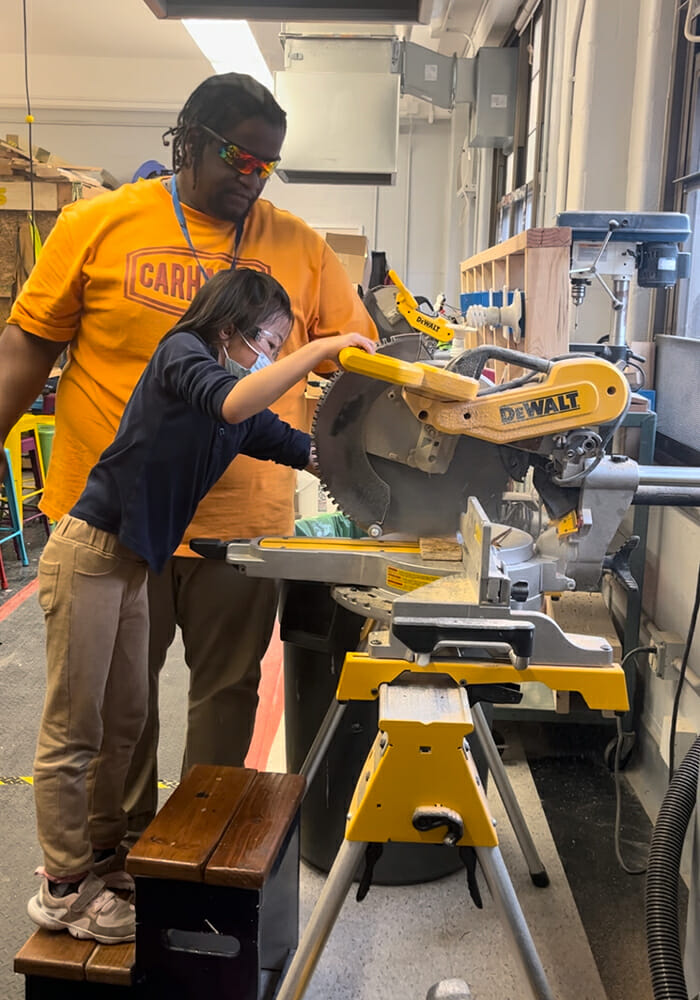
Students learn to safely use power tools in Mr. Jarrett’s class. (Photo: Heather Wallace)
Challenges in Public Education
As the construction industry continues to look for successful strategies to entice young workers to join, Mr. Jarrett’s class both emphasizes the benefits of careers in construction trades and also puts a spotlight on the huge challenges we have in the public education system.
Teaching in settings with large class sizes will always be a challenge, but Evin has an additional language barrier. Mayfair School is home to students who speak Spanish, Portuguese, Arabic, Vietnamese, Russian, French, Mandarin, and Khmer and sometimes there are 4-5 different languages being spoken in his class at one time.
Many of these students do not speak English so he has had to find innovative ways to translate safety and lesson plans into multiple languages. His two most common methods are utilizing students who are fluent, as translators; and AI bot recordings that translate his material into a required language.
And then there’s standardized testing. Overall, non-English speaking students do poorly on these tests for very obvious reasons. In Mr. Jarrett’s class they may also take a mock-NOCTI exam as an 8th grader. NOCTI provides credentialing tools to support Pennsylvania’s career and technical education (CTE) programs. Half of the test is hands-on and allows a person to demonstrate skills and technical knowledge; the other half is a written test - currently only available in English and normally given to Junior or Seniors in high school.
For Evin’s students who want a career in the construction trades, the transition from middle school to high school is rough and oftentimes disappointing. Like most public schools, Mayfair students must apply to their preferred high school and are put into a lottery system that determines the order in which students get to choose. Only a few high schools in the district offer construction CTE programs.
Emelyn, one of Evin’s star students, dreams of becoming a construction trades teacher. She has passed his mock-NOCTI exam but was not able to get into Swenson Arts and Technology High School. “I’m pretty frustrated,” says Emelyn. “They have a carpentry program and I wanted to continue the trades in the future. I know plumbing, electrical and carpentry - this is a very big disappointment.”
Evin’s school district initially promised that his top students would receive exceptions from the lottery and would be able to get into the high school trade program of their choice. But this has not panned out for students like Emelyn. For Evin’s program to be able to provide a meaningful pathway to construction, it will require the school administration and district to be 100% onboard and support him.
To date, the exceptions have not been approved and there is no solution for his students.
More Than Trades
Ask any employer what young people are lacking as they enter the workforce and “soft skills” is at the top of the list. Being comfortable with failure is one of the pillars for building soft skills.
Evin has successfully created a safe culture for failing forward in his classroom. His students - both the loud ones and the quiet ones - are eager to raise their hands hoping to provide a correct answer and have the opportunity to demonstrate part of their hands-on activity. And they are not deterred by a wrong answer - they simply raise their hand again.
His students are also encouraged and empowered to lead. In addition to assisting with lesson translations, his students also help with photography and run The Dope Student Podcast where they interview guests (using questions they write themselves) and oversee sound, podcast equipment and video cameras. This year Mr. Jarrett started working with Momentum Innovation Group to help test out offsite construction curriculum. Students built WikiHouse models and one student is now creating a “how-to” WikiHouse training video to help students better understand how to put it together.
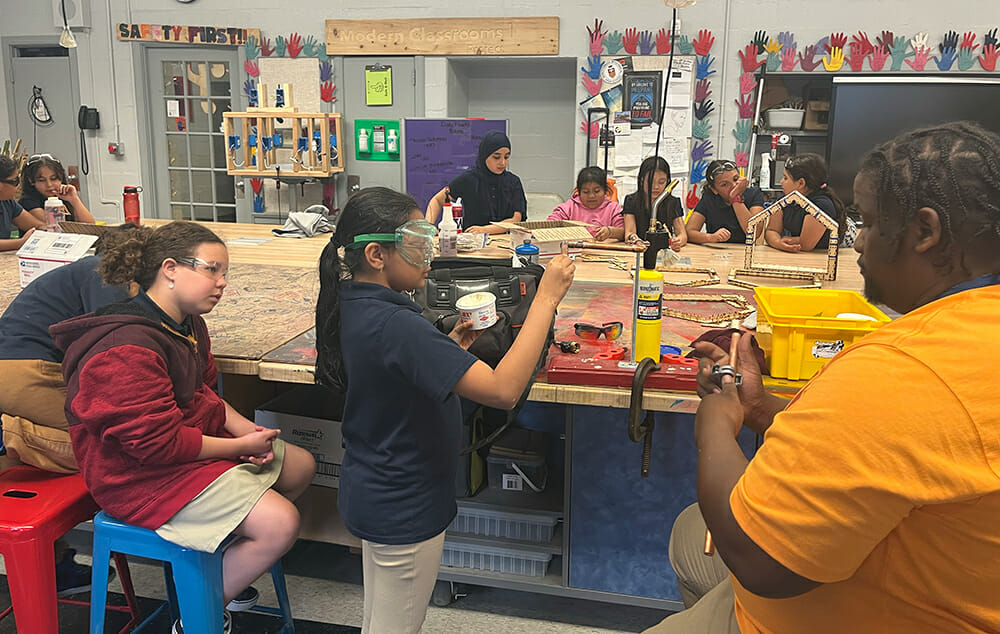
At times there are 4-5 different languages represented in Mr. Jarrett’s class at one time. (Photo: Heather Wallace)
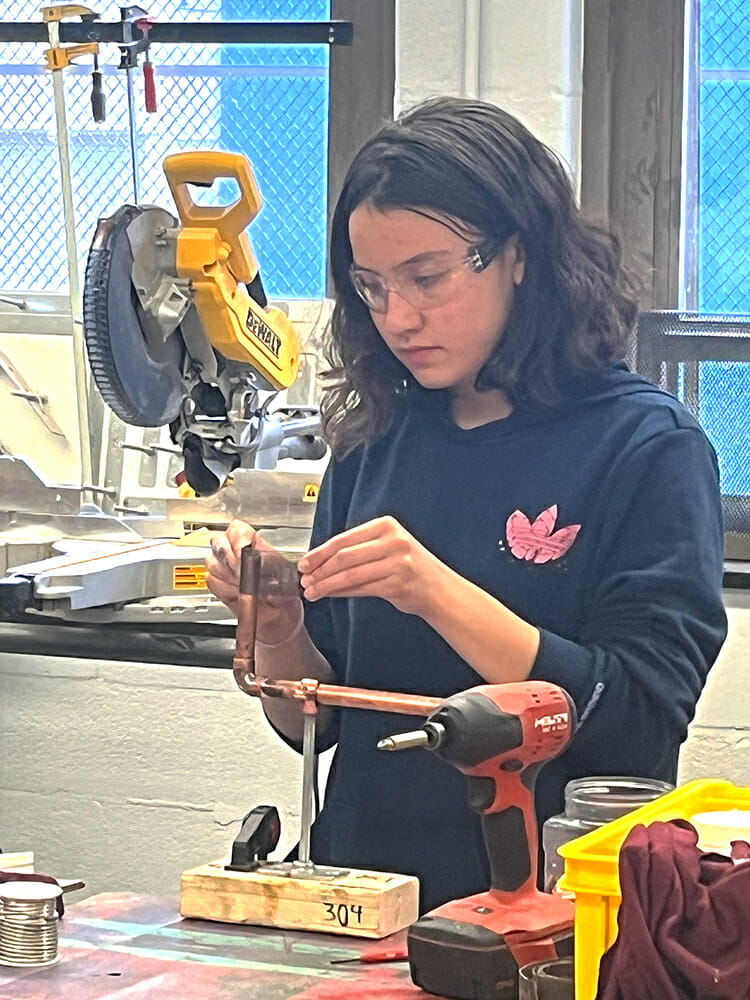
Emelyn working on a plumbing project. (Photo: Heather Wallace)
Related Listening:
From Stress Comes Strength: Developing the Construction Workforce of Tomorrow w/ Kevin O'Connor, Host of This Old House
Kevin O'Connor, longtime host of the Emmy Award-winning series This Old House, joins the podcast to share his perspective on the benefits of offsite construction practices in residential construction.
Kevin also talks about This Old House's Generation NEXT initiative, the construction industry's worker shortage, and how professionals within the industry can encourage young students and recent graduates to enter (and excel in) the trades.
What is the Role of Industry?
When the subject of workforce development arises there are many opinions on how our dwindling labor pool has become what it is. There is likely some truth to everyone’s response, but the real question should be: How do we help fix this mess? The reality of our labor shortage is that it’s our problem and each of us can play a part in helping to fix it. Kids need early exposure to the offsite construction industry.
On a positive note, there are a lot of people and organizations working on solutions. But industry has to be authentically involved. If your business is near schools, reach out to them and offer to send your kid-friendly employee to do an in-person presentation to elementary or middle school students about what your company does in the offsite construction space. Or create an engaging pre-recorded version that educators across the country can use in career exploration classes. Offer tours of your facility. Teach them about the exciting careers available in our industry. Unless they see these jobs they will never consider them as a career.
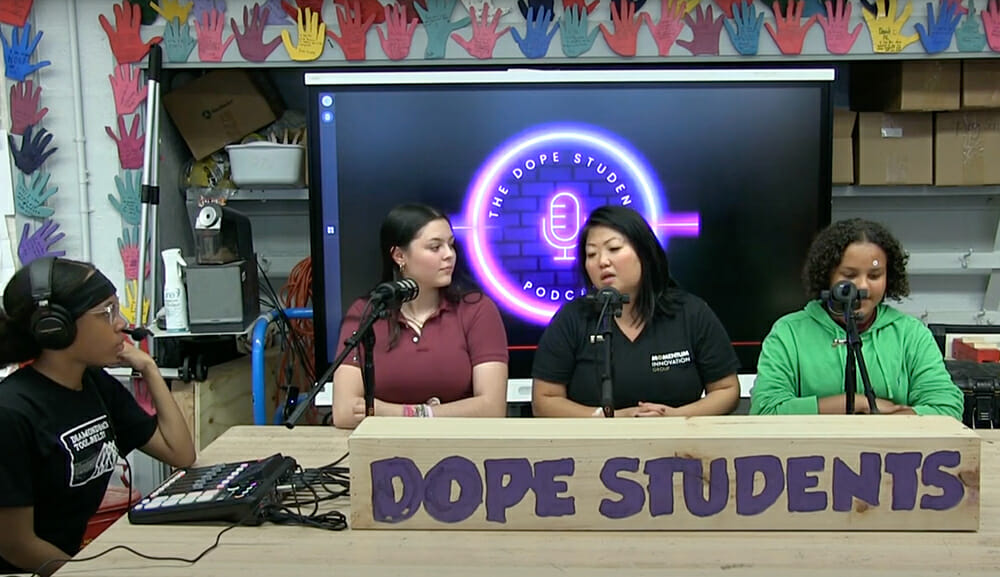
Students in Evin Jarrett’s construction trades CTE program run The Dope Student Podcast where they regularly interview industry professionals. (Photo: Evin Jarrett)
How Does Education Need to Change?
Primary and secondary education need to adapt to infuse career exploration and development with core curriculum. Every student should have the opportunity to learn about engineering or home economics while learning math. Let them learn about HVAC systems in science class. Have them explore social issues by learning about the construction industry and how housing shortages impact society.
Let’s take the focus away from what 4-year school they are going to and instead start asking them early on: How do you want to change the world? Education should act as building blocks to get them to the place where they can dream big and become problem solvers of the future. But for students like Emelyn, this has not been her experience. For two years she was forced to take Spanish classes - she was already fluent in Spanish. She could have spent that time in Evin’s classroom as a teaching assistant - a far better fit and use of her time and it builds on what she’s passionate about.
The Carnegie Foundation for the Advancement of Teaching - the same organization that designed our current grading system - is exploring how to update our grading system to provide students credit and acknowledgement for activities like working full-time during high school. For this to work, schools and industry will also have to shift their thinking and redefine what success looks like and what it really means.
More from Modular Advantage
DORÇE Navigates Mountainous Terrain, Extreme Weather to Help Rebuild Türkiye
The February 6 earthquakes in 2023 were enormous. In response, DORÇE moved quickly, obtaining a government bid to help create housing and multipurpose structures—both temporary and permanent—for earthquake victims and laborers hired for reconstruction efforts.
Modern Desert Oasis: Building Reset Hotel the Modular Way
While the off-site construction part of the Reset Hotel project has been carefully controlled and with every necessity close at hand at BECC Modular’s factory in Ontario, Canada, the remote location of the project site has created additional challenges for the on site portion of the build.
Revisiting Yellowstone Canyon Village—a Groundbreaking Modular Construction Feat—Ten Years On
With such a short building period due to impending cold, it made the most sense for park developer Xanterra to pursue modular. Yellowstone’s high visitor traffic also required some odd transportation scheduling, as traffic from the West Yellowstone entrance determined the times when trucks could unload modules. Guerdon was up to the challenge.
Built for Brutal Cold, This Modular Office Building Shines
Houlton, the county seat of Aroostook County, Maine, is a small town with a population of about 6,000 residents. Situated along the border between the U.S. and Canada, what the town is most known for is bitterly cold winters. When the U.S. Border Patrol needed new office space, a modular building approach from Modular Genius offered the perfect solution.
Panel Replacement Adds Years of Life to Navy Vessel
Panel Built, Inc., recently replaced all the wall and roof panels on a two-story US Navy barge deck house that the company had originally installed 30 years ago, giving the vessel new life. Now, the commanding officer of the unit that uses the barge said the difference between the condition and appearance from when the barge left their facility to when the project was complete was beyond his expectations of what was possible.
True Modular Building Seeks to Revolutionize Housing. It’s Next Stop: MBI’s World of Modular Europe
True Modular Building (TMB) specializes in crafting attainable, eco-friendly, and comfortable build-to-rent (BTR) housing with modern designs and customizable features, ensuring that residents feel at home both today and tomorrow.
From Toronto to Suriname: A Global Modular Building Story
When I AM Gold – a Canadian gold mining operation based in Toronto, Ontario – wanted to expand its mining operations in Suriname, it knew it would also need to expand its infrastructure. More specifically, they needed to build a mechanical services compound that would allow their local crews to maintain and equipment critical to their mining operations. They also knew that it would be a challenge.
There Were a “Sea of Challenges” for this Modular, Island Development
Question: Can modular construction be used to build a series of affordable, unique housing buildings, all styled to look like they were built in 1845, on an
island that caters to the wealthy? The answer is, of course, yes, but how the
team at Signature Building Systems and KOH Architecture got there is quite a story.
America’s Construction Economy: A Race Against Time
If the economy has been able to handle higher interest rates thus far, undoubtedly it will be able to manage the lower interest rates to come. But many economists are pointing out that the Federal Reserve may already be too late to the game. While they gradually reduce interest rates, the U.S. economy could quickly decelerate, at least based on theoretical grounds if not on the most recent data releases, culminating in that long-predicted recession. Only time will tell.
Top Five Benefits of Modular Office Space
Modular office spaces are transforming how businesses think about their work environments. These innovative structures offer a mix of flexibility, efficiency, and sustainability, making them a smart choice for companies looking to gain an advantage.






